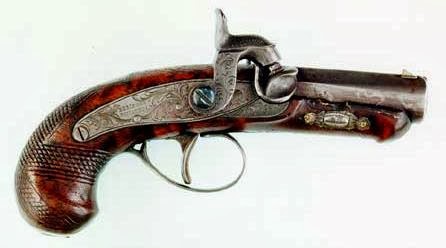FEBRUARY 27, 1864:
The first
Union prisoners of war arrived at Camp Sumter, better known as Andersonville
Prison, near Andersonville, Georgia.
Built by slave labor, the camp took only a month to
construct. Planned for 10,000 men, the camp covered an area of 17 acres.
Surrounded by an outer stockade fence that kept anyone from seeing out (or in),
there was also an inner “fence” 25 feet within the walls, consisting of a
length of staked wire. Any prisoner who crossed the wire against orders was
immediately shot by the guards, giving the wire the name of the
“deadline.” This term made its way into
colloquial American English as a synonym for any completion or termination
date
Due to the discontinuation of prisoner exchanges in April
1864, the camp’s population eventually reached a high of 33,000, three times
its intended population. Given the acute shortages faced by the Confederate civilian
and military populations in 1864, it is no surprise that Union POWs received
virtually nothing from their captors.

The ratty and worn out Confederate army tents used by the
prisoners provided almost no shelter from the elements. What clothes the men had
quickly became filthy rags. What food there was consisted of a nutrient-poor
watery broth with a few roots or grasses thrown in, served intermittently.
Sanitary conditions were execrable. The camp’s one water supply, a creek
running through the midst of the compound, became polluted and then clogged with
human waste and camp trash. Lice became endemic, and the weakened, starving men
had no ability to fight off maladies such as scurvy, typhus, typhoid, the
childhood diseases, dysentery, and other epidemics. Andersonville’s death rate
skyrocketed to 3,000 per month.

In the midst of this living hell, Union loyalties were tested
and often broken. Some men swore allegiance to the Confederacy just to escape
the hellish conditions of their confinement. Other men became an ad hoc group
called the “Raiders” who stole food and supplies from those weaker than they.
The Raiders were challenged by the “Regulators,” who would fight the “Raiders”
with whatever weapons might be available --- fists, feet, teeth, rocks,
improvised clubs, and the like. Many of the “Raiders” were hanged after the
war.
The images that came out of Andersonville are all eerily
reminiscent of the Nazi Concentration Camps still 80 years in the future; such
things had never been captured on film before, and the public, North and South,
and around the world, was ---and remains to this day --- horrified.
The Confederate guards became brutish, often beating or
killing the prisoners on a whim. Attempting to restore some order, the Camp
Commandant, Major Henry Wirz, imposed hanging as a punishment for even minor prisoner
offenses.
Beyond gratuitous disciplinary hangings, Wirz did
essentially nothing to improve the lot of the prisoners, not even fully
advising Richmond of the horrific conditions of his command. He did put the
sick and starving men to work building a series of pointless defensive
earthworks for the camp as the Union seized more and more Georgia territory. How
many died from exhaustion due to overwork will never be known.
Of the more than 45,000 POWs who passed through
Andersonville, 13,000 died within the stockade. This represents 40% of all
Union POW deaths during the Civil War.
At the war’s end Wirz was arrested by the Union, tried for
“Impairment of the Prisoners” and was hanged. Despite the awful conditions of
all Civil War POW camps --- including Camp Salisbury in North Carolina, Camp
Douglas in Chicago and Elmira Prison in upstate New York --- Andersonville was
arguably the worst, and Wirz was the only Civil War-era Prisoner of War Camp
Commandant hanged for war crimes.

















